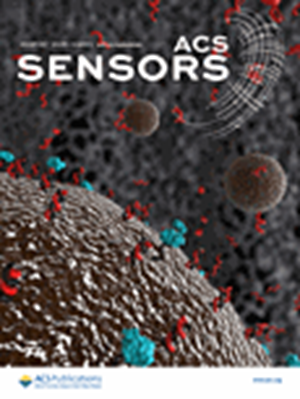Improving Real-Time In Vivo Molecular Monitoring: Multi-Gaussian with Laplacian Voltammogram Fitting Enhances the Precision of Electrochemical Aptamer-Based Sensors
IF 8.2
1区 化学
Q1 CHEMISTRY, ANALYTICAL
引用次数: 0
Abstract
Electrochemical, aptamer-based (EAB) sensors are the first technology supporting high-frequency, real-time measurements of the concentrations of specific drugs, metabolites, and biomarkers in the body that is independent of the chemical reactivity of its analytes. To achieve this, EAB sensors employ the binding-induced folding of an electrode-attached, redox-reporter-modified aptamer to produce an electrochemical output easily monitored using square wave voltammetry. Using such sensors, multiple research groups have achieved the seconds-resolved, multihour measurement of multiple drugs and metabolites in situ in the veins, brains, and peripheral solid tissues of live animals. Historically, the large volume of voltammograms (hundreds per hour) produced by in vivo EAB sensors have been fitted using simple polynomials to extract the peak heights from which target concentrations are estimated. This, however, can lead to misestimation of peak heights due to overfitting of noise or poor correction of peak shouldering. In response, here we describe an alternative method of fitting EAB sensor voltammograms that improves the accuracy of “problematic” (i.e., noisy, or heavily “shouldered”) data sets while simultaneously reducing sensor noise.

改进活体分子实时监测:拉普拉斯伏安拟合多高斯提高了电化学适体传感器的精度
基于适配体的电化学(EAB)传感器是第一种支持高频、实时测量体内特定药物、代谢物和生物标志物浓度的技术,而不依赖于分析物的化学反应性。为了实现这一目标,EAB传感器采用电极连接、氧化还原报告修饰的适体的结合诱导折叠,从而产生易于使用方波伏安法监测的电化学输出。使用这种传感器,多个研究小组已经实现了对活体动物静脉、大脑和周围实体组织中多种药物和代谢物的数秒分辨、数小时原位测量。从历史上看,体内EAB传感器产生的大量伏安图(每小时数百张)已经使用简单多项式来拟合提取峰高,从中估计目标浓度。然而,由于噪声的过拟合或峰肩校正不良,这可能导致峰高的错误估计。作为回应,本文描述了一种拟合EAB传感器伏安图的替代方法,该方法可以提高“有问题”(即有噪声或严重“肩带”)数据集的准确性,同时降低传感器噪声。
本文章由计算机程序翻译,如有差异,请以英文原文为准。
求助全文
约1分钟内获得全文
求助全文
来源期刊

ACS Sensors
Chemical Engineering-Bioengineering
CiteScore
14.50
自引率
3.40%
发文量
372
期刊介绍:
ACS Sensors is a peer-reviewed research journal that focuses on the dissemination of new and original knowledge in the field of sensor science, particularly those that selectively sense chemical or biological species or processes. The journal covers a broad range of topics, including but not limited to biosensors, chemical sensors, gas sensors, intracellular sensors, single molecule sensors, cell chips, and microfluidic devices. It aims to publish articles that address conceptual advances in sensing technology applicable to various types of analytes or application papers that report on the use of existing sensing concepts in new ways or for new analytes.
 求助内容:
求助内容: 应助结果提醒方式:
应助结果提醒方式:


